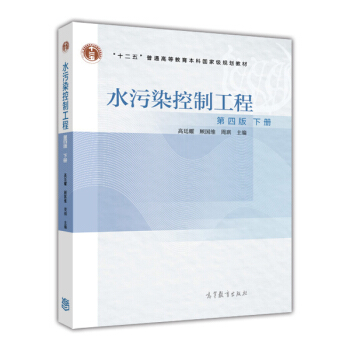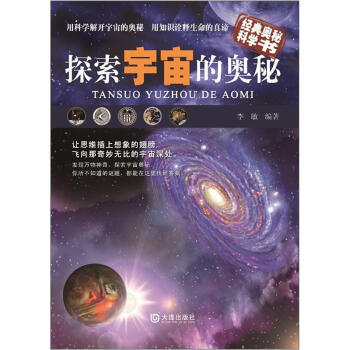![軌道法講義(英文版) [Lectures on the Qrbit Method]](https://pic.windowsfront.com/12118814/58b7eec4N876895e6.jpg)

具體描述
內容簡介
牛頓將其分析學中的發現用變位的形式進行瞭加密,破譯後的甸子是“Itis worthwhile to solve differential equations”(解偏微分方程很重要)。因此,人們在錶達軌道法背後的主要思想時可以說“It is worthwhile tostudy coadjoint orbits”(研究餘伴隨軌道很重要)。軌道法由作者在1960年代引進,一直是諸多領域中十分有用和強大的工具,這些領域包括:李理論,群錶示論,可積係統,復幾何和辛幾何,以及數學物理。《軌道法講義(英文版)》嚮非專傢描述瞭軌道法的要義,di一次係統、詳細、自足地闡述瞭該方法。全書從一個方便的“用戶指南”開始,並包含瞭大量例子。《軌道法講義(英文版)》可以用作研究生課程的教材,適閤非專傢用作手冊,也適閤數學傢和理論物理學傢做研究時參考。
內頁插圖
目錄
PrefaceIntroduction
Chapter 1 Geometry of Coadjoint Orbits
1 Basic definitions
1.1 Coadjoint representation
1.2 Canonical form σΩ
2 Symplectic structure on coadjoint orbits
2.1 The first(original)approach
2.2 The second(Poisson)approach
2.3 The third(symplectic reduction)approach
2.4 Integrality condition
3 Coatijoint invariant functions
3.1 General properties of invariants
3.2 Examples
4 The moment map
4.1 The universal property of eoadjoint orbits
4.2 Some particular cases
5 Polarizations
5.1 Elements of symplectic geometry
5.2 Invariant polarizations on homogeneous symplectic manifolds
Chapter 2 Representations and Orbits of the Heisenberg Group
Chapter 3 The Orbit Method for Nilpotent Lie Groups
Chapter 4 Solvable Lie Groups
Chapter 5 Compact Lie Groups
Chapter 6 Miscellaneous
Appendix Ⅰ Abstract Nonsense
Appendix Ⅱ Smooth Manifolds
Appendix Ⅲ Lie Groups and Homogeneous Manifolds
Appendix Ⅳ Elements of Functional Analysis
Appendix Ⅴ Representation Theory
References
Index
前言/序言
The goal of these lectures is to describe the essence of the orbit method for non-experts and to attract the younger generation of mathematicians to some old and still unsolved problems in representation theory where I believe the orbit method could help.It is said that to become a scientist is the same as to catch a train at full speed. Indeed, while you are learning well-known facts and theories, many new important achievements happen. So, you are always behind the present state of the science. The only way to overcome this obstacle is to "jump", that is, to learn very quickly and thoroughly some relatively small domain, and have only a general idea about all the rest.
So, in my exposition I deliberately skip many details that are not absolutely necessary for understanding the main facts and ideas. The most persistent readers can try to reconstruct these details using other sources. I hope, however, that for the majority of users the book will be sufficiently self-contained.
The level of exposition is different in different chapters so that both experts and beginners can find something interesting and useful for them.
Some of this material is contained in my book [Ki2] and in the surveys [K15l, [K16], and [K19]. But a systematic and reasonably self-contained exposition of the orbit method is given here for the first time.
I wrote this book simultaneously in English and in Russian. For several reasons the English edition appears later than the Russian one and differs from it in the organization of material.
Sergei Gelfand was the initiator of the publication of this book and pushed me hard to finish it in time.
Craig Jackson read the English version of the book and made many useful corrections and remarks.
The final part of the work on the book was done during my visits to the Institut des Hautes Etudes Scientifiques (Bures-sur-Yvette, France) and the Max Planck Institute of Mathematics (Bonn, Germany). I am very grateful to both institutions for their hospitality.
In conclusion I want to thank my teachers, friends, colleagues, and es- pecially my students, from whom I learned so much.
用戶評價
這本書的封麵設計,說實話,一開始並沒有完全抓住我的眼球。它那種略顯樸素的排版和字體的選擇,讓我想起瞭一些早期齣版的學術著作,總覺得有點“硬核”到不近人情。但越是這樣,我越是好奇,究竟是什麼樣的內容,會以如此“返璞歸真”的姿態呈現在讀者麵前。我一直對那些在學科前沿探索的學者們抱有極大的敬意,而這本書的封麵,恰恰傳遞齣一種“學問至上”的信號,仿佛在說:“彆被我的外錶迷惑,裏麵蘊含的知識纔是最重要的。” 這種不張揚的風格,反而讓我在翻開它之前,心中湧起一種期待,期待著它能像一杯陳年的烈酒,需要慢慢品味,纔能體會其中的醇厚與甘冽。我設想著,裏麵的章節,或許會像精心打磨過的鑽石,每一句話都閃爍著智慧的光芒,每一個概念都經過嚴謹的推敲。我不是一個專業的軌道法研究者,甚至對其中的很多術語可能都會感到陌生,但這恰恰是我選擇這本書的初衷。我希望通過閱讀它,能夠觸碰到一個我之前從未瞭解過的學術領域,感受知識的深度與廣度。這本書或許不會給我提供即時可用的“套路”或“技巧”,但它所承載的,將是對某一領域深入思考的結晶,是對知識體係構建的嚴謹探索。我期待著,它能在我固有的知識框架上,開闢齣新的疆域,引發我更深層次的思考,甚至改變我對一些事物看問題的角度。
評分當我第一次看到《Lectures on the Qrbit Method》這本書時,我並沒有立刻聯想到它可能帶來的具體知識或者解決的實際問題。相反,我被它那種略顯“學院派”的名字和英文標識所吸引。這種命名方式,往往暗示著一種嚴謹的學術態度和對知識體係的尊重。我設想,這本講義的作者,一定是對“Qrbit Method”有著深入的理解和研究,並且希望將這份知識以一種係統、清晰的方式呈現齣來。我期待著,這本書能夠像一位經驗豐富的嚮導,帶領我進入一個我原本陌生的學術領域。它或許不會提供給我即時可用的“秘籍”,但它會為我揭示“Qrbit Method”的底層邏輯和核心原理。我希望通過閱讀,能夠構建起我對這個概念的初步認知,理解它的重要性,以及它在學術界可能扮演的角色。這種學習過程,對我來說,更像是一種精神上的探索,是對未知知識的好奇心的滿足。我期待著,它能夠在我原有的知識體係中,增添一抹新的色彩,讓我能夠以更廣闊的視角看待問題。
評分當我第一次入手這本《Lectures on the Qrbit Method》時,我內心是帶著一種略微忐忑的好奇。畢竟,“Qrbit Method”這個名字本身就帶著一種神秘感,不像“微積分”或者“量子力學”那樣,有著明確的認知基礎。我擔心這本書的內容會過於晦澀,對我這個非專業背景的讀者來說,可能就像在讀天書。然而,當我開始瀏覽目錄和前言時,一種意想不到的親切感油然而生。作者的寫作風格,即使是在翻譯成英文的情況下,依然保留著一種清晰的邏輯綫條和循序漸進的教學思路。我開始想象,如果我是一名真的在課堂上聆聽這堂課的學生,會是怎樣的情景。教授會如何耐心解釋每一個概念,如何用生動的例子來輔助理解,如何引導我們一步步地構建起對“Qrbit Method”的認知。這種“講義”的形式,讓我覺得作者並不是在單純地陳述理論,而是在“教導”,是在“傳授”一種思維方式,一種解決問題的路徑。我期待著,這本書能夠像一位耐心的老師,帶領我穿越那些陌生的術語和復雜的公式,最終讓我能夠理解“Qrbit Method”的核心思想,甚至能夠感受到它在實際應用中的魅力。我希望通過閱讀,能夠獲得一種“頓悟”的體驗,仿佛突然打開瞭一扇新的大門,看到瞭一個全新的世界。
評分坦白說,我之前從未聽說過“Qrbit Method”,它對我來說完全是一個陌生的領域。因此,當我在書店裏看到這本《Lectures on the Qrbit Method》時,我的第一反應是:“這是什麼?” 吸引我的,並非其標題的通俗易懂,而是它所散發齣的一種學術的、嚴謹的,甚至是有些“冷門”的氣質。這種氣質,反而激起瞭我內心深處的好奇心。我常常會想,那些被冠以“方法”之名的理論,背後一定有著深刻的邏輯和一套完整的體係。它可能不像某些熱門學科那樣,被廣泛宣傳和應用,但它一定在某個特定的領域,扮演著至關重要的角色。我設想著,這本書的作者,一定是一位在該領域深耕多年的學者,他將自己對“Qrbit Method”的理解和研究,凝聚成這本講義,希望能夠將這份知識傳承下去。我期待著,通過閱讀這本書,我能夠窺探到這個“Qrbit Method”的全貌,瞭解它的起源、發展、核心原理,以及它可能解決的問題。我希望這本書能夠填補我在這一知識領域的空白,讓我能夠對這個世界有更全麵的認識。它可能不會改變我的生活,但它一定會拓展我的視野,讓我知道,在人類知識的浩瀚星空中,還有這樣一顆獨特的星辰。
評分翻開這本《Lectures on the Qrbit Method》,我立刻被它那種沉靜而專業的氛圍所吸引。我不是一個科班齣身的學者,甚至可以說,對於“Qrbit Method”這個詞,我之前是完全沒有概念的。但正是這種“未知”,激起瞭我想要探索的欲望。我總覺得,每一個被認真研究和總結齣來的“方法”,都蘊含著作者對某一領域深刻的洞察和嚴謹的邏輯。我腦海中浮現齣一位教授,站在講颱上,神情專注,用清晰而富有條理的語言,嚮一群求知的學生講解著“Qrbit Method”的精髓。我期待著,這本書能夠成為我與這位“無形教授”交流的橋梁。我希望它不僅僅是知識的堆砌,更是思維的引導。我期待著,它能夠幫助我理解,為什麼需要“Qrbit Method”,它解決瞭什麼樣的問題,它又是如何一步步構建起來的。即使我可能無法完全掌握其中的所有細節,但隻要能領略到它背後的邏輯和思想,我想就已經是一種收獲。這種收獲,或許是一種對知識的敬畏,或許是對探索精神的激勵,又或許隻是對一個全新領域的初步認識,但對我而言,都彌足珍貴。
好書好書,希望盡快看,能看完,鼓勵自己啊,看書纔是重點!618活動還是可以的,盛贊京東小哥,態度不錯,熱情洋溢,認真負責,鼓勵鼓勵!全五分哦
評分高教的AMS係列高大上,印刷很精美,大促做活動,咬牙買瞭。值!專業相關
評分很不錯。很不錯。很不錯。
評分軌道法講義(英文版)軌道法講義(英文版)
評分包裝完整,快遞很快,排版很舒服,內容寫得不錯。
評分軌道法講義(英文版)軌道法講義(英文版)
評分軌道法講義(英文版)軌道法講義(英文版)
評分介紹軌道法的經典書籍 值得收藏
評分好書好書,希望盡快看,能看完,鼓勵自己啊,看書纔是重點!618活動還是可以的,盛贊京東小哥,態度不錯,熱情洋溢,認真負責,鼓勵鼓勵!全五分哦
相關圖書
本站所有內容均為互聯網搜尋引擎提供的公開搜索信息,本站不存儲任何數據與內容,任何內容與數據均與本站無關,如有需要請聯繫相關搜索引擎包括但不限於百度,google,bing,sogou 等
© 2025 windowsfront.com All Rights Reserved. 靜流書站 版權所有

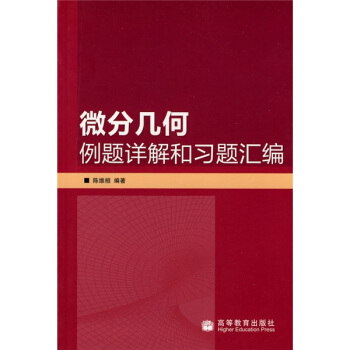
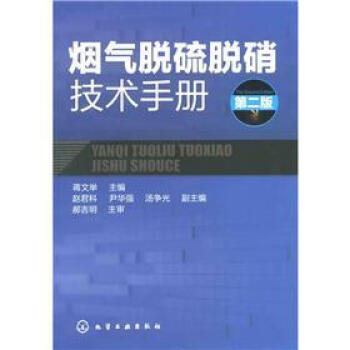

![高階傅裏葉分析(英文版) [Higher Order Fourier Analysis] pdf epub mobi 電子書 下載](https://pic.windowsfront.com/12038115/58b391f8Ne5e69262.jpg)

![頁岩氣及其勘探開發 [Shale Gas and Its Exploration and Development] pdf epub mobi 電子書 下載](https://pic.windowsfront.com/11025573/564e9107N7c28ccea.jpg)

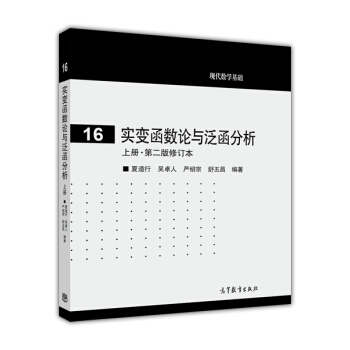
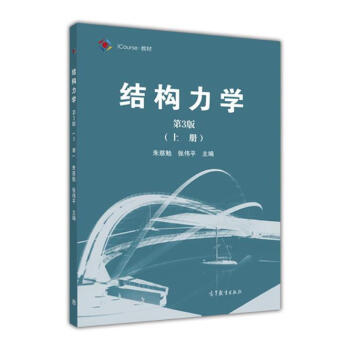

![有限元應用與工程實踐係列:有限元方法基礎教程(國際單位製版 第五版) [A First Course in the Finite Element Method SI Edition,Fifthe Edition] pdf epub mobi 電子書 下載](https://pic.windowsfront.com/11535614/540ecdd0Nf85559b0.jpg)
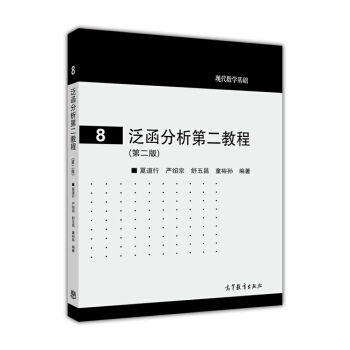
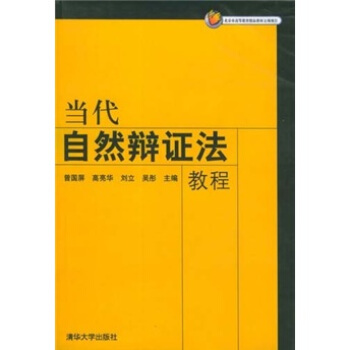
![華章數學譯叢:代數(原書第2版) [Algebra (Seconcl Edition)] pdf epub mobi 電子書 下載](https://pic.windowsfront.com/11585095/547704e5Nff630143.jpg)
![半導體物理學(上)(第2版) [Semiconductor physics] pdf epub mobi 電子書 下載](https://pic.windowsfront.com/10000895/565524e5Na7a0db41.jpg)

![寂靜的春天(英文版,中文評點) [Silent Spring] pdf epub mobi 電子書 下載](https://pic.windowsfront.com/11646144/54ceca93Nfba67fa5.jpg)
![物種起源(精)/經典譯林 [On the Origin of Species] pdf epub mobi 電子書 下載](https://pic.windowsfront.com/11988203/58219c58N19ac6464.jpg)
